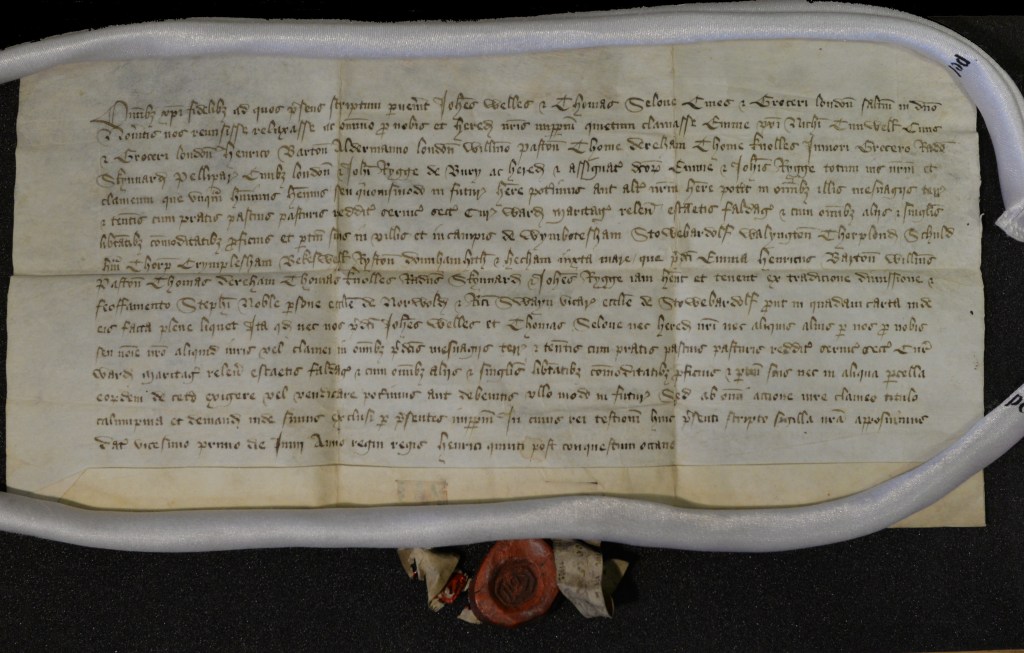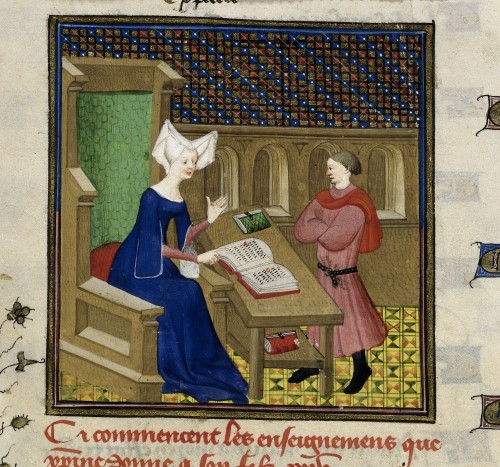Women’s rights and access to property has changed drastically throughout history. At times women had access to property and at other times women were restricted from owning property. Despite restrictions, there were still loopholes where women could inherit property, usually when there were no other male relatives. The Middle Ages were a time of restricted property ownership for women.

In the aftermath of the Norman Conquest, the English merged Norman and Anglo-Saxon property law to create a new society. This meant that women could not own property, sue in court, or run taverns or stores because in the eyes of the law men and women were one financial unit. However, there was a loophole where women could own property. Widows and spinsters still had access to financial rights.[2] Widows were given dowers after their husbands had passed. Dowers were usually money or land and sometimes the dower was even negotiated as part of the couple’s marriage agreement.[3]
Quitclaims were documents that allowed a person to waive or transfer their property rights. Medieval quitclaims were used to ensure transactions to convey land, and all people who had a right to the land were asked to sign a quitclaim which waived their right to the land. This included a pledge that they would not use legal means to try to obtain the land.[4]

An example that is specific to Norfolk is the quitclaim by Alice, who was the wife of John Roying of Stanford. In her quitclaim, she gave land to Mariota, the wife of John de Barford of Stanford. This land included some scattered fields in the village of Stanford and included the way of Thanetgate. The restrictive Anglo-Norman laws would have been in place 200 years later when Alice created her quitclaim. The fact that a woman was giving land to another woman suggests that they were both widows since they both had the financial freedom to give and receive land, a highly valued asset. It also suggests that Alice was a powerful woman since she had land that she could spare.
Alice’s quitclaim allows a glimpse into the everyday workings of property management for women during the Middle Ages. Those women that were privileged enough to own land could do what they wanted with it; they could keep it or give it away as Alice did.
Researched and written by Anita Sharma
[1] https://www.nottingham.ac.uk/manuscriptsandspecialcollections/images-multimedia/researchguidance/deedsindepth/freehold-quitclaim/06-1006m-fullsize.jpg
[2] https://www.theguardian.com/money/us-money-blog/2014/aug/11/women-rights-money-timeline-history
[3]https://www.nottingham.ac.uk/manuscriptsandspecialcollections/learning/medievalwomen/theme3/propertyownership.aspx
[4]https://www.nottingham.ac.uk/manuscriptsandspecialcollections/researchguidance/deedsindepth/freehold/quitclaim.aspx
[5] https://blogs.bl.uk/digitisedmanuscripts/2022/02/medieval-and-renaissance-women.html













